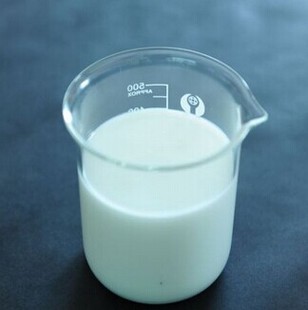Silicone defoamer is a white, viscous emulsion. It has been used in various industrial fields since the 1960s, but its large-scale and comprehensive rapid development began in the 1980s. As a silicone defoaming agent, its application fields are also very wide, and it has attracted more and more attention from all walks of life. In chemical, papermaking, coating, food, textile, pharmaceutical and other industrial sectors, silicone defoamer is an indispensable additive in the production process. It can not only remove foam on the liquid surface of the process medium during the production process, thereby improving filtration, The separation, gasification, liquid drainage and other effects of washing, extraction, distillation, evaporation, dehydration, drying and other processes ensure the capacity of various materials holding and processing containers.
The advantages and disadvantages of silicone defoamer
Advantages of silicone defoamer:
1) Wide range of applications: Due to the special chemical structure of silicone oil, it is neither compatible with water or substances containing polar groups, nor is it compatible with hydrocarbons or Hydrocarbon-containing organic matter is soluble. Due to the insolubility of silicone oil to various substances, it has a wide range of applications. It can be used for defoaming in water systems and oil systems.

2) Small surface tension: The surface capacity of silicone oil is generally 20-21 dynes/cm, which is lower than water (72 dynes/cm) and general foaming liquids. The surface tension is small and the defoaming effect is good.
3) Good thermal stability: Taking the commonly used dimethicone as an example, it can withstand 150℃ for a long time and more than 300℃ for a short time. Its Si -O keys do not decompose. This ensures that the silicone defoamer can be used within a wide temperature range.
4) Good chemical stability: Because the Si-O bond is relatively stable, the chemical stability of silicone oil is very high and it is difficult to chemically react with other substances. Therefore, as long as the preparation is reasonable, silicone defoaming agents are allowed to be used in systems containing acids, alkalis, and salts.
5) Physiologically inert: Silicone oil has been proven to be non-toxic to humans and animals, and its half-lethal dose is greater than 34 g/kg. Therefore, silicone defoaming agents (with suitable non-toxic emulsifiers, etc.) can be safely used in industries such as food, medical, pharmaceutical and cosmetics.
6) Strong defoaming power: Silicone defoaming agents can not only effectively break the foam that has been generated, but also significantly inhibit foam and prevent the formation of foam. Its usage is very small, as long as one millionth (1ppm) of the weight of the foaming medium is added, it can produce defoaming effect. Its common range is 1 to 100ppm. Not only is the cost low, but it also does not pollute the defoamed material.
Disadvantages of silicone defoamer:
1) The dispersion of polysiloxane is difficult: polysiloxane is difficult to dissolve in water, which hinders its dispersion in the water system, and a dispersant must be added. If too much dispersant is added, the emulsion will be stable and the defoaming effect will become worse. It is necessary to use less emulsifier to make the defoaming effect good and the emulsion stable.
2) Silicone is oil-soluble, which reduces its defoaming effect in oil systems.
3) Long-term high temperature resistance and poor resistance to strong alkali

Emulsion defoamer
Using silicone oil or silicone paste under strong stirring or the action of an emulsifier to form a silicone oil emulsion can effectively improve the dispersion of silicone oil in the water phase. Therefore, it is widely used as a defoaming agent in water systems. Emulsion defoamer is also the most widely used and most widely used silicone defoamer.
Emulsion-type silicone defoamer is generally formulated from dimethyl silicone oil, emulsifier, emulsion stabilizer and deionized water. The emulsifiers used are mainly low-foaming non-ionic emulsifiers, such as Span, Tween and polyethylene glycol. The effect of mixed emulsifiers is better than that of a single emulsifier. The particle size of silicone oil emulsion is the most important control indicator for emulsion defoamer. To obtain a silicone oil emulsion with high defoaming efficiency and good storage stability, the particle size is usually required to be less than 10 μm.
Therefore, in addition to selecting appropriate emulsifiers and mixing and grinding process conditions, thickeners such as polyvinyl alcohol and methylcellulose can also be added to improve the continuous Phase viscosity.
When using emulsion-type silicone defoamer, you should first understand the temperature, acidity and alkalinity of the foaming system, because they will affect the stability of the emulsion. It can even lead to demulsification.
Although emulsion-type silicone defoamer is difficult to store for a long time and is easy to stratify.It has the disadvantage of being easy to deteriorate, but it has the characteristics of easy use, wide application, obvious defoaming effect and moderate price. All of them are still welcomed by users, and with the advancement of process technology, emulsion-type silicone defoamer will also have more Larger development space.
Solid defoaming agent
Solid defoamer has the characteristics of good storage stability, easy transportation, and easy use. It can not only be used in the production of non-foaming and low-foaming washing powder, but also Other occasions requiring defoaming operations.
There are three methods for preparing solid silicone defoamer:
(1) Disperse the silicone oil directly on the surface of the solid carrier;
(2) Melt the silicone oil with fatty alcohols, fatty acids, fatty amides, fatty acid esters or paraffin with lower softening points, and then melt the melt Attached to the surface of the solid carrier;
(3) Mix the organic silicone oil and the film-forming material so that the film-forming material is encapsulated on the outside of the silicone oil defoaming component to form dispersed solid particles.


